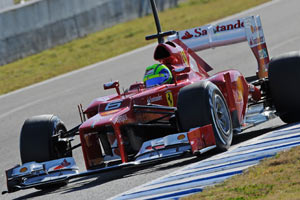bhallg2k wrote:f1316 wrote:And yet with all this talk of exhausts, it doesn't seem clear to me that there's really that much benefit being gained by teams because of their exhaust positioning. [...]
I think the irony of this whole ordeal is that it seems Ferrari would have done themselves a huge favor had they stuck to their bread and butter design philosophy of expertly refining conventional wisdom, something no team does better. The regulations appear to be tailor-made for that kind of approach.
The week before the Chinese GP I thought about that. Looking at the successful designs this year and knowing the time performances of the F150, a car that could not benefit from a lot of EBD performance... the irony was pretty obvious.
If Ferrari had had a more conventional approach switching to pull rod given time, step by step... they could by now being at the front of both championships.
But sometimes a organizations are not rational. And there's also the pressing need of adaptation that couldn't be posponed any more.






